Introduction to Organic Soybean Farming
Soybean is also called golden beans and Soya bean belongs to the family of legume. Soybean is a herbaceous annual plant in the family Fabaceae grown for its edible seeds. The Soybean plant is generally an erect bush with woody stems and alternately arranged leaves. Organic farmers grow crops without using synthetic fertilizers or pesticides, relying instead on a wide range of cultural practices and alternative inputs believed to be safer for the consumer and the environment.
A Step by Step Guide to Organic Soybean Farming, Cultivation Practices
Soybeans are comparatively easy to produce using organic methods. Though, it is important to recognize that organic farms rarely focus on a single crop. Organic Soybeans are best grown in rotation with several other crops that (ideally) compensate for one another. Organic production is further improved when livestock enterprises that involve grazing and generate manure are also part of the system.
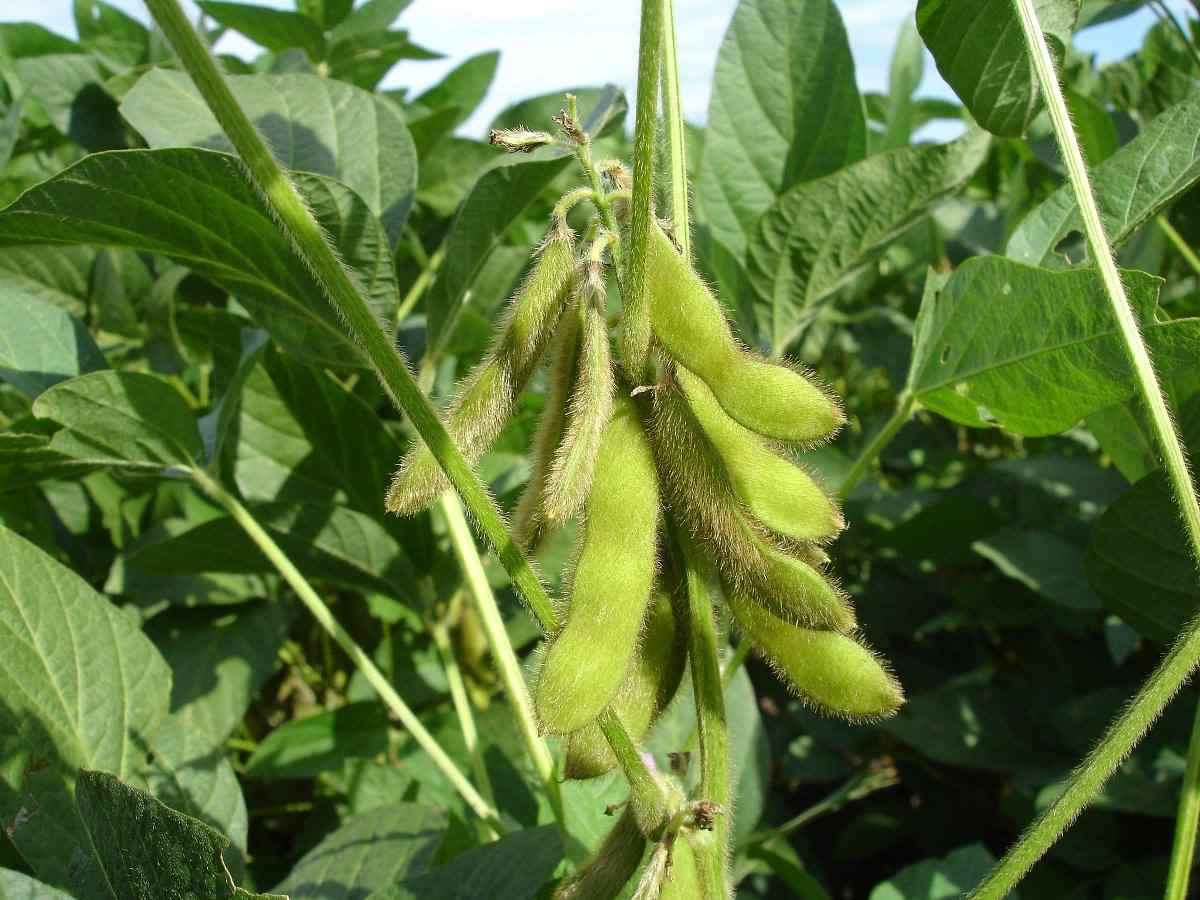
Soybean grows best in temperate, subtropical, and tropical regions. They can be grown throughout the year in the subtropics and tropics if the water is available. Soybean requires well- fertile and drained soil, 400 to 500 mm of precipitation in a season for a good crop. High moisture requirement is important at the time of germination, flowering, and pod forming stage. Dry weather is important for ripening.
Organic Soil Preparation for Soybean Farming
The soil must be relatively smooth and friable before planting to allow good seed-to-soil contact. Planting populations based on the Soybean variety planted, but seeding rates usually range from 175,000 to 225,000 seeds per acre to provide quick in-row shading and weed management.
Soil fertility in organic systems is maintained through crop rotations, applications of seaweed and applications of manure, fish emulsion, or plant/animal-based products, such as feather meal. Soybeans fix nitrogen for the crop needs and can be grown without manure or compost unless phosphorus levels are deficient. Soil testing is suggested to determine the need for supplemental amendments. Subsequent crops must include rotations of grain crops and nitrogen-adding cover crops to maintain suitable fertility for future Soybean crops. Sample the soil in at least four places per acre to determine if lime is needed to adjust the pH value (6.5 to 7.0).
Site Selection for Organic Soybean Farming
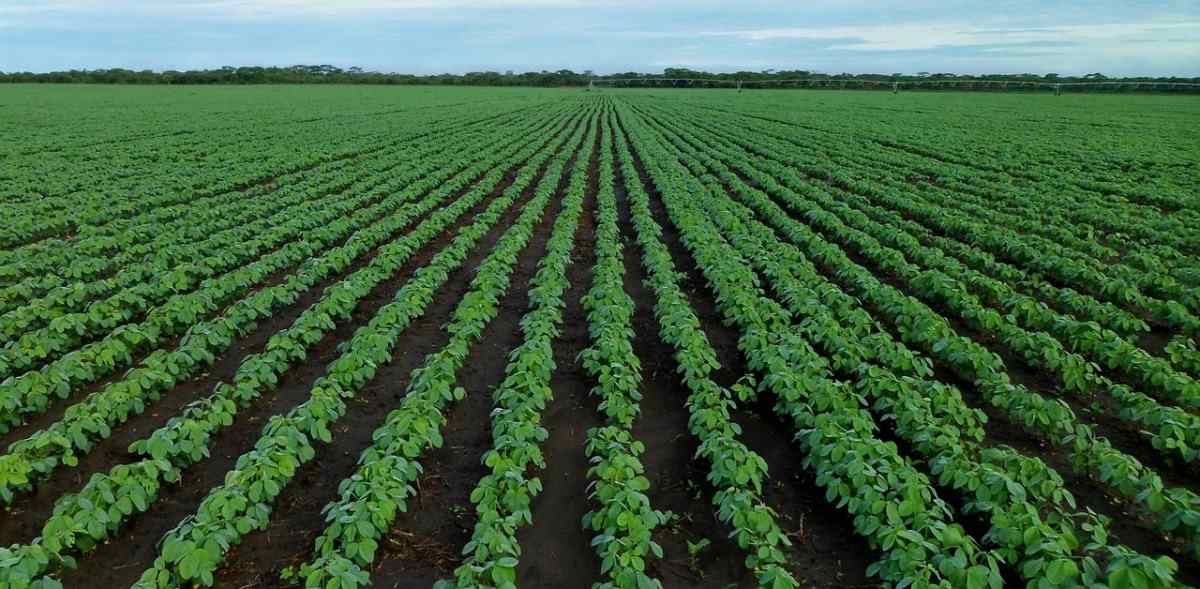
For a grain to be promoted as certified organic, the site selected must have been free of prohibited substances for the previous 3 years. Soil fertility is managed by using manure, cover crops, and compost rather than synthetic fertilizers. Organic specialty Soybeans must be isolated from non-organic Soybeans during all phases of production and harvest.
Crop Rotation Importance for Organic Soybean Farming
Crop rotations serve two main purposes: to break pest cycles and to improve soil fertility. Regarding fertility management, rotation strategies focus mainly on generating and conserving nitrogen. Nitrogen is the most limiting element in organic Soybean production, particularly for corn and small grains, which complement Soybeans in most crop sequences. Crop rotations that contain forage legumes are the key means by which nitrogen is supplied to the system.
Seed Rate and Sowing in Organic Soybean Farming
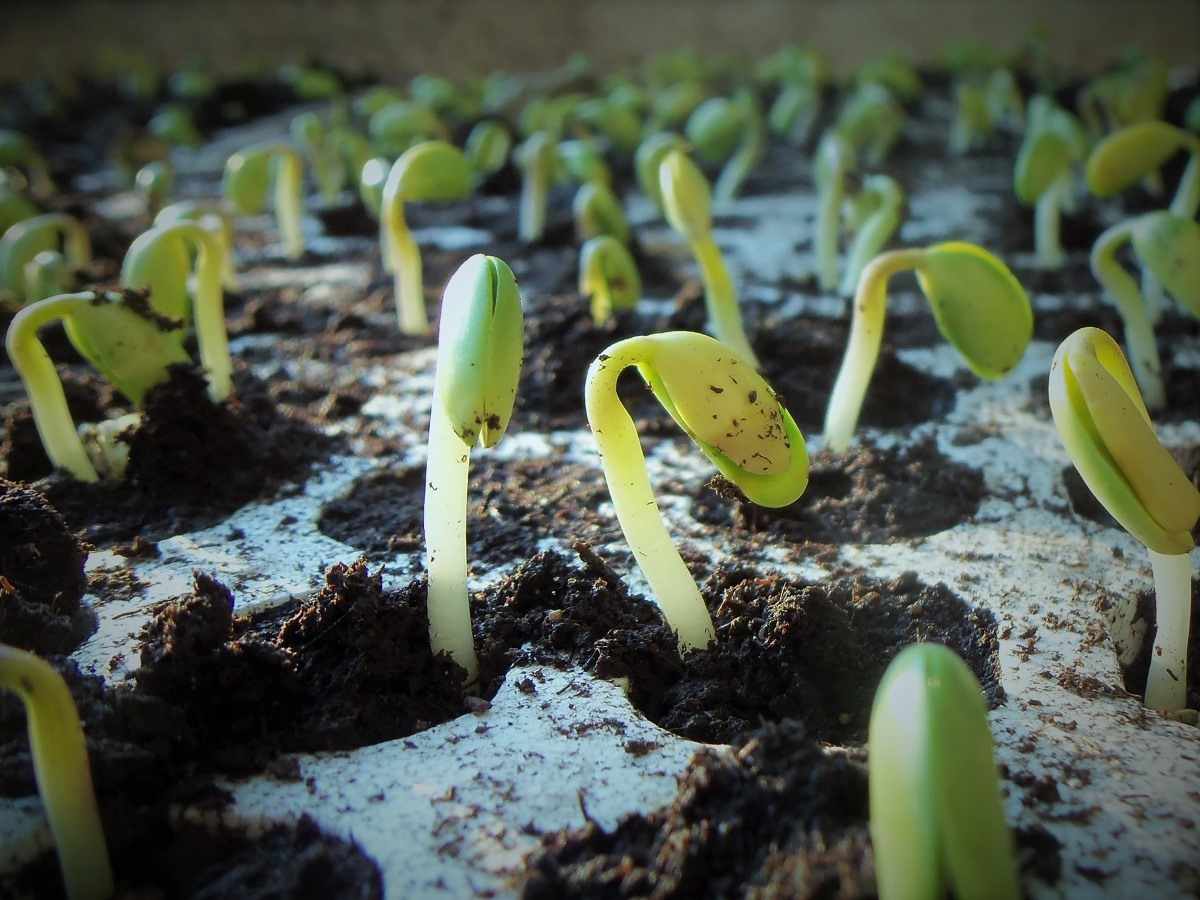
Soybean has grown for grain purpose needs about 20 to 30 kg seed/ha but for fodder crop needs about 70 to 75 kg/ha during Kharif season and 100 to 120 kg/ha during spring. 45 to 60 cm X 2.5 cm spacing is good for the Kharif crop and 30 to 45 cm X 2.5 cm in the spring season.
The sowing must be done in lines 45 to 60 cm apart with the help of a seed drill or behind the plough. Plant to plant distance should be 4 to 5 cm. The depth of sowing must not be more than 3 to 4 cm under optimum moisture conditions. The seed rate of Soybean based upon germination percentage, seed size, and sowing time.
The Benefits of an Organic System
Crop rotation, green manuring, cover cropping, use of livestock manure, and composting contribute much more to the whole agroecosystem than may be readily apparent. By adding organic matter and stimulating biological activity in the soil, these practices make mineral nutrients more available to plants, generate the microbial production of plant-beneficial chemicals, and improve the soil’s tilth.
Soybean is a short-day plant; it requires hot weather for optimum production. It can be grown year-round in most parts of the tropics. Plants can be grown at ambient temperatures between 15 and 27°C although temperature below 21°C and above 32°C may reduce flowering. Temperatures exceeding 40°C are detrimental to seed production. Soybeans are adapted to grow in a wide range of soils and climates but require adequate soil moisture for germination and seedling establishment. Soybean plants are more sensitive to waterlogging but are tolerant of drought conditions once established. Soybean grows best on a loose, light, well-draining loam with a pH of 6.5.
Propagation in Organic Soybean Farming
You should not miss this: Hydroponic Basil Farming.
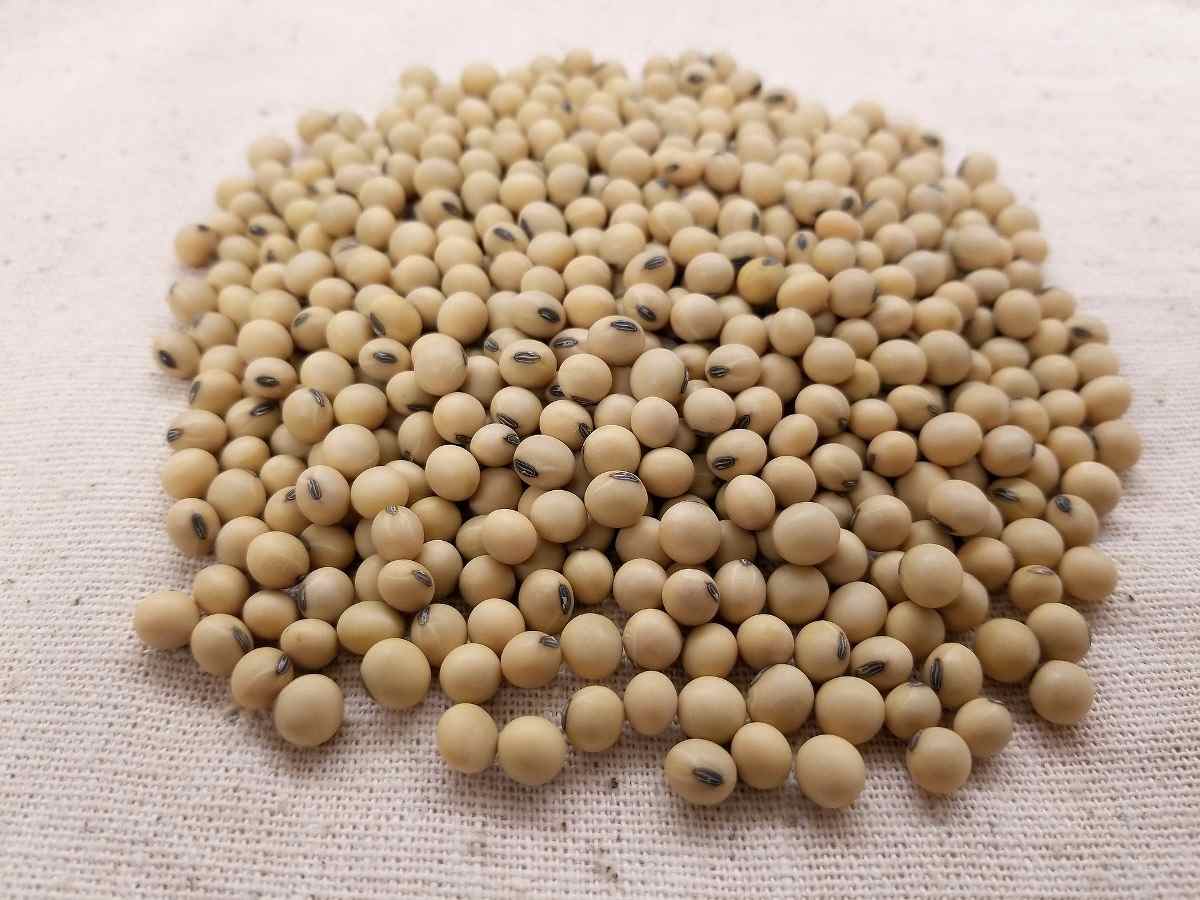
Soybean is propagated directly from seed. If seeds are too planted in a field where Soybean has not been grown in the 3 to 5 years previous, they should first be inoculated with nitrogen-fixing bacteria. The seedbed must be prepared before planting by removing any crop residue, large stones, and weeds. Tilling the soil helps to break up large clods of earth. Seeds may be sown by hand or mechanically. In tilled soils, seeds are usually planted at a depth 3.2 to 4.5 cm in rows spaced 30 cm apart. Otherwise, no-till planting may be used to plant seeds in the stubble of a previous crop without first cultivating the soil. With this method, seeds are drilled into the soil in rows spaced 17.8 cm apart. No-till practices reduce soil erosion and decrease the loss of moisture in the soil.
Planting and Weed Management in Organic Soybean Farming
In general, the preparation of the land for Soybean is less or more the same as it is for maize. It requires a good seedbed with a reasonable fine texture and not too many clods. Land must be well levelled and be free from crop stubble. One deep ploughing with mouldboard followed by two harrowing or two ploughings with the local plough is sufficient. There must be optimum moisture in the field at the time of sowing. The sowing must be done in lines 45 to 60 cm apart with the help of seed drill or behind the plough. Plant to plant distance should be 4 to 5 cm. The depth of sowing must not be more than 3 to 4 cm. under best moisture conditions. If the seed is placed deeper or there is a crust formation just after sowing, the seed germination may be late and may result in a poor crop stand. If the seed is of 80% germination, 70 to 80 kg seed per hectare is required.
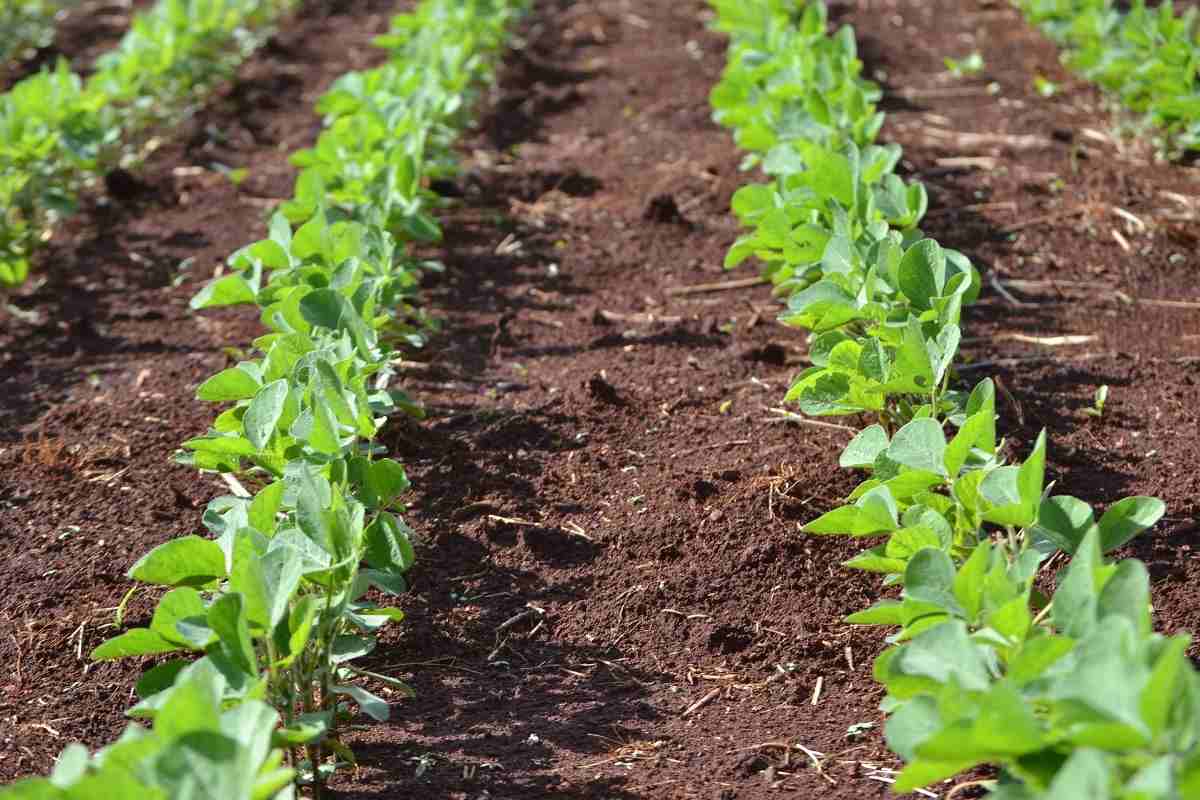
Field cultivators will kill most rye cover crops between 6inches and 8inches, using harrow attachments to bring residue to the surface. Taller rye can be cut with a stalk chopper first to aid in plant degradation. Cultivate again around a week after first tillage operations to kill germinating weed seeds that have developed as a result of soil disturbance. Plant Soybeans at least 1 inch deep when the soil has reached temperatures of 10°C. Some organic farmers believe that suitable soil temperature is important to a successful crop and may delay planting their Soybean crop until June when soils are warmer, and bean leaf beetles have colonized other earlier-planted fields.
Weed control is the most important element of organic Soybean production. Tillage operations need planning and precise timing. 3 to 5 days after planting (depending on weather conditions), rotary-hoe weeds at a slow speed (5 mph) for good penetration. Once the Soybeans have emerged and are beyond the “crook” stage, at 7 to 10 days, hoe again a little faster (7 to 9 mph) to enhance surface aggressiveness. Row cultivation can begin as soon as Soybeans reach a suitable size to withstand soil around the base of the plant. In the mid growing season, when the plants are flowering, cultivate again at a faster speed to throw around 1inch of soil up around plants. The last cultivation must be slow (5 mph). Organic farmers use a variety of cultivator additions, including guidance mirrors, metal tent shields, disk Hillers, and sweep configurations (e.g., 26-inch one-piece sweeps in 36-inch row spacings).
Organic weed management is challenging in Soybeans than in corn because the Soybean foliage does not generally overlap and shade the row middles until later in the season. Usually, narrow rows (down to 20 inches) and increased plant population can help the crop compete more effectively against weeds. When managing weeds, consider also that different planting times for Soybeans result in the plants competing against different sets of weed species. Weeds that emerge during the first 4 to 5 weeks after planting will cause the most damage in terms of yield reductions.
Weeds that develop after this time will have little effect on yield, although they may make harvest more difficult and will set seed. The goal must be to maintain the field clean through the first 4 to 5 weeks after planting. A blind cultivator, such as a flex-tine harrow or rotary hoe, is used before Soybean emergence and nearly every 5 days afterward. Anywhere from 2 to 5 blind cultivations occur before between-row cultivation begins. A regular problem is the missing of blind cultivations due to wet weather. Unfortunately, near-row weeds missed during this wet weather often continue until the end of the season. Taller crops, such as corn, can bear lots of soil throwing, and between-row cultivators can be set to bury young weeds. Though, Soybeans can tolerate only small amounts of burial due to how low pods are set on stems.
Organic Fertilizer Requirement for Soybean Farming
For obtaining good yields of Soybean, 15 to 20 tonnes of compost or farmyard manure per hectare have to be applied. A good crop of Soybean, yielding around 30 quintals per hectare removes about 300 kg nitrogen per hectare from the soil. But Soybean being a legume can supply their own nitrogen needs provided they have been inoculated and there is efficient modulation in the plant. An application of 20 to 30 kg nitrogen per hectare as a starter dose will be enough to meet the nitrogen requirement of the crop in the initial stage in low fertility soils having poor organic matter. Soybean needs relatively large amounts of phosphorus than other crops. Phosphorus is taken up by the Soybean plant during the growing season. The period of great demand starts just before the pods begin to form and continues until about ten days before the seeds are fully developed.
A crop of Soybean yielding 30 quintals per hectare removes about 100 kg potassium from the soil. The rate of potassium uptake climbs to a peak in the period of rapid vegetative growth then slows down about the time the bean begins to form. A soil test is the best guide for the application of potash in the soil. In the absence of a soil test, 50 to 60 kg K2O per hectare has to be applied. The fertilizers have to be placed preferably at sowing time, about 5 to 7 cm away from the seed at a depth of 5 to 7 cm from seed level.
Irrigation Requirement for Organic Soybean Framing
Moisture is essential for germination during early development. Artificial watering or Rainfall at the time of their seed-filling period is necessary. Though, Soybeans can withstand some drought once they are well established.
The Soybean crop generally does not require any irrigation in Kharif season. Though, if there were a long spell of drought at the time of pod filling, one irrigation would be desirable. During excessive rains proper drainage is also equally important.
Pests and Disease Management in Organic Soybean Framing
Insect and disease management relies heavily on employing sound agronomic practices, such as crop rotation and, when available, resistant varieties. Fungicides and Insecticides are infrequently applied to Soybeans. Weed control can be obtained by a good crop rotation program and herbicides.
Corn earworm and tobacco budworm
Tobacco budworm and corn earworm are some of the most destructive insect pests of Soybean, through pod feeding and sometimes foliar and flower feeding. Their biology is very similar. In conventionally managed Soybeans, tobacco budworm is more tolerant of certain conventional insecticides compared to corn earworm. Though, from the organic Soybean producer, the distinction is largely insignificant. These insects will often infest Soybeans in early August or late July. Soybeans will be less attractive to these pests if the canopy is closed if blooms are not present and if there is little young, newly grown, vegetation. Remedial management using a spinosyn can be highly effective.
Stink bugs
Stink bug insects injure Soybeans by feeding on developing seeds inside pods. Early-maturing fields can infrequently attract high densities of these pests. In general, though, earlier-maturing and earlier-planted Soybeans are less susceptible to stink bugs infestation than later-maturing and later-planted Soybeans.
Soybean looper
Peak larval population densities occur in September and are most prevalent on later-maturing or late-planted Soybeans. Soybean can tolerate a comparatively high amount of foliar feeding, compared to other crops. Remedial management using a spinosyn can be effective.
When and How to Harvest Soybean
Soybeans are ready to harvest between 70 and 160 days after planting, based on the variety. Plants are ready for harvest when the stems and leaves have turned yellow and the seed pods brown to black.
Most of the Soybeans are mechanically harvested. The length of the growing season varies from 50 to 200 days, depending on the variety, weather, latitude, etc. Soybeans are harvested over a relatively short period. Organic Soybean production is a highly seasonal activity with the result that the beans are gathered and placed in storage for utilization over the entire year.
In case if you are interested in this: Growing Organic Cucumbers In Containers, Pots.
Very useful information!!!sincere thanks….please highlight appropriate pest control measures suitable for Organic Soybean Cultivation !!